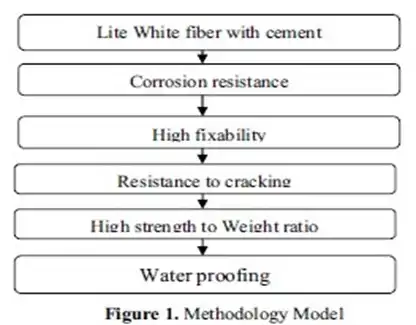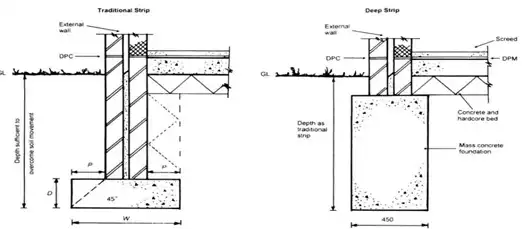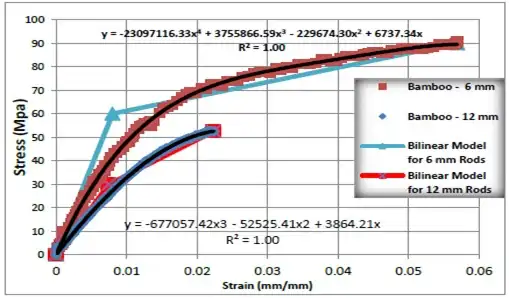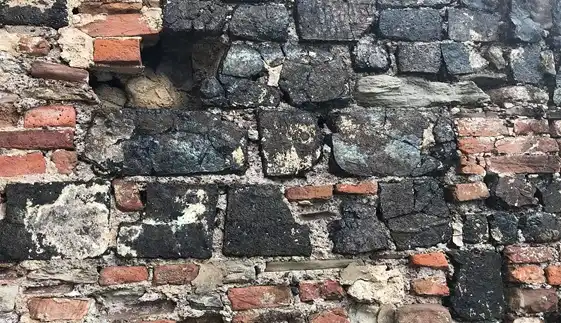In India, responding to the ever-increasing housing needs of a growing population at a rate of 1.3 % per year has become a challenge for the government. Since 37 % of the population lives underneath the global destitution line, giving moderate lodging stays a first concern for the public authority. Compared to developed countries, the maximum affordability of a household in India is to be described as 5 times the average taxable income of a family. According to a location’s development index, the average cost per sq.m is about $130, $130 – $173 in B class cities, and $173 – $258 in metro cities in semi-urban areas. So, for housing needs such as living, sleeping, cooking, and washing, most Indians have per capital space equivalent to or not exactly a 3m X 3m, i.e. (9 sq.M) room. Concurrently the average is 10 sq.M /person in rural areas and 11 sq. M / person in urban areas, according to traditional norms. Natural materials such as straw, Bamboo, fibers (jute, coir), Earth, then other raw materials have been used in India for centuries. Apart from being locally accessible, these materials are simple to work with and construct quickly, lowering costs. Industrial wastes such as fly ash & rice husk also have polarization properties and also be used as a suitable replacement content. This article aims to put together research on these products while keeping their cost in mind.
1.1 Low-cost housing
It is a new concept that involves effective applying of budgeting strategies that help reduce construction costs by using through local materials and improving capacity and technology without losing structure strength and efficiency or life.
India, like every other developing nation, is currently experiencing a severe housing shortage. As maintain National Buildings Organization (NBO), there used to be 30 million dwelling unit shortage in 2015, with 10.4 million units in urban sector and remaining 20.6 million units in the rural sector.By the turn of the century, the housing backlog is projected to reach 41 million people. At the bottom of the economic ladder, the situation is dreadful. About 33% of the population in developing countries is homeless, according to UN estimates. According to a recent UNCHS survey, over 100 million people are lost. Over 1 billion people were forced to live in dangerously inadequate housing that haphazardness their health, security, and safety.
Managers are searching for advanced building materials and methods to address these challenges, and one such solution is the use of low-cost construction. The project phases are completed concurrently rather than sequentially in this method. The difficulties in project management are addressed by proper project organization restructuring, upgraded management engagement, appropriate materials three procurement. The preparation of operations, project quality assurance, equitably managing project risk, and managing the cost-cutting strategies used in housing construction. The Council for Works and Housing (CWHR) is a research & development body under the Ministry of Science & Technology’s umbrella. This council’s primary purpose is to encourage scientific study on issues relating to various forms of civil engineering systems, such as structures, highways, bridges, dams, harbors, treatment plants, etc.
In Maharashtra, the disparity between aggregate housing demand and aggregate housing supply is significant. As a result, the state has a high intensity of housing inadequacy. Housing has become completely unaffordable for many people due to the rising cost of materials for building. The cost of building materials now accounts for 60-70 % of the total construction cost—the widespread use of traditional steel as a popular building material. Cement, burnt clay bricks, and wood demonstrate an upward trend in construction costs over time. Even when inflation is below double digits, the cost of the building increases up to 14-15 % each year. As a result, an essential topic of immediate concern is the decline in construction costs. The Cost-Effective, Environmentally Friendly (CEEF) technology is working hard to incorporate advanced programming and architectural planning, logical and structural designs, work organization, execution, and management, and the use of new materials and construction devices.
- Manufacturing of Low Cost Building Materials.
- Environmental friendly.
- Improve technologies for production.
- Reduction in waste generation.
- Use of Recycled Waste as Building Materials.
- Waste produced can be used as a production of a material cheaper in cost.
- Use of Natural Low Cost Building Materials.
- Natural materials are sustainable and environmental friendly.
- Materials like stone, lime, bamboo, sand have low embodied energy.
- Use of local building materials.
- Reduces transportation dependence.
- Suitable for local environment.
- Use of non-toxic Building materials.
- Materials to be free from any kind of toxins.
- Higher air cycling required if any highly organic volatile compounds are used.
- Longevity, Durability and Maintenance.
- Use of durable construction materials decreases the maintenance cost.
- Low maintenance cost saves a lot of Building operating costs.
- Recyclability and Re-usability.
- In a form so that it can be recycled or reused. Eg. Plastic.
- Biodegradability.
- Decompose naturally when discarded.
- Not produce toxic gases while decomposition.
1.2 NATURAL MATERIALS
1.2.1 Bamboo
India is the world’s second-biggest maker of Bamboo, after China. There are 58 types of Bamboo in India, spread across 10 genera, that are endemic to the country’s northeastern locale alone. Bamboos are found in about 9.57 million hectares of forest in India, or about 12.8 % of the total area under forest, according to a conservative estimate. As it is widespread availability in China, Japan, & India, this grass has become an interesting structural material, ease of assembly, and extended durability. The most important thing to remember about Bamboo is that its design specification and concept selection are governed by Young’s Modulus (i.e. Its flexibility), tensile strength (i.e. Its resistance to a material to a tearing force).
1.2.2 Earth
Although the Earth remains the oldest known building material to all of humanity, its widespread use is hampered by issues. Such as Permeation of water, Water splashing from ground surfaces, termite and insect infestations, and high maintenance requirements all contribute to the deterioration of ground-level walls. Compressed earth block & non-erodible mud plaster may be used to solve these limitations.
1.2.3 Straw
Straw remains a by-product of agriculture that consists solely of plant stalks (for the most part, cereals) after grain and debris have been eliminated. straw has the highest silica content of any cereal straw, forming it as a strongest material. Straw is considered an environmental issue because it causes respiratory issues when burned. Since India is one of the world’s largest producers of straw bale, the market for straw and straw bale is vast. Agriculture covers 46% of India’s total land area (32,87,590 sq km), and 58.4% of the country’s population of 1,17,09,38,000 people depend solely on agriculture for their livelihood. As a result, it has a lot of potential as a construction material.
1.3 By Product materials
1.3.1 Copper slag
It is a by-product of the smelting of copper. Impurities transform into slag, which floats on the molten metal in the smelting process. Slag quenched in water creates angular granules, which are either discarded or used. Copper slag can be a partial substitute for sand in concrete manufacturing. It is moulded into blocks and used as a construction material. In areas where smelting was done, such usage was popular. Granulated slag (size fraction 3 mm) has insulating and drainage properties that can be used to prevent ground frost in the winter, which can lead to pavement cracks. The use of this slag decreases the use of primary materials and the depth of construction, lowering the energy demand in the house.
2. LITERATURE REVIEW
Drexel University has created another plastic half-breed fibre-supported polymer (FRP) bar. This new bar is remarkable in that it has bilinear pressure strain reciprocals, just as Young’s modulus equivalent to steel. Its limiting properties have been improved by the immediate addition of ribs during the in-line plaiting and pultrusion measure utilized in its assembling. When used as support in new or reestablished solid constructions, it accomplishes elastic properties similar to steel, considering a limit states plan system. The latest FRP bar has a bilinear pressure strain pliable bend with an unequivocal yield, an extreme strength more prominent than the yield, and a severe disappointment strain of between 2% and 3%. It has the advantages of being non-destructive, lightweight, non conductive, and nonmagnetic, just like high force. It tends to be redone to meet the strength prerequisites of existing steel supporting bars or pre-stressing ligaments. This paper momentarily portrays the way toward planning and delivering the new FRP bars. It analyzes the standard and test pressure strain qualities of the new bars created utilizing a model meshing/expulsion measure, just as the conduct of these unique bars in flexure with steel support. It takes a gander at the bilinear pressure strain relationship of the support means for the heap diversion and second bend conduct of flexural individuals. Finally, the flexibility of bars built up with new FRP and steel bars is set up.
The limit and malleability of RC pieces are influenced by the utilization of fibre-supported polymer (FRP) as the essential support for fix and reproduction. The compromise between expanding limits and diminishing pliability in FRP-supported flexural individuals was often a wellspring of conflict. A creative crossover support framework (HRS) was utilized in this investigation to give the vital limit increment while holding sufficient flexibility. Ten RC single-direction pieces were tried in this examination. The excess chunks were inside built up with HRS in nine distinct profiles, with a control piece supported with ordinary steel. The number of perimeters reinforcing layers and core or perimeter reinforcement was the critical variables in this analysis. It was discovered that using the novel, HRS increased the section’s ultimate load capacity and flexibility significantly.
The following findings are drawn from the presented experimental work & discussions:
For low-income households, Bredenoord (2018) explained sustainable housing and building materials. It has been determined that long-term aims for low-cost housing and applications are feasible. Indicators pertaining to neighbourhood physical development, such as urban density and connection, are just as significant as measures pertaining to community development. Support for community-based organizations, small housing cooperatives (or similar forms of collaboration), and individual households or small groups – who build and expand their homes progressively – is included in the final category. In order to achieve incremental sustainability, adequate design, social structure, and support are required. Tapkir et al. (2019) described the research and analysis of low-cost housing techniques. It has been discovered that the cost of a project is influenced by three factors: project time, materials used, and techniques. Different approaches for cost control and reduction were covered in this research. The HRS with an aluminium core failed abruptly due to weak flexural disappointment, while the HRS with a steel centre fizzled flexural malleable. All HRS specimens had a crack diameter that was 29–75% narrower than the reference specimen by ordinary reinforcement.
Huma Yun and Pasha (2016) studied about sundried Fly ash brick the aggregate binder ratio used for fly ash brick was given as 1:4. The average size of fly ash brick was 230x110x75mm and mortar joint of 10 to 12 mm was used. And was tested using uni-axial monotonic compressive displacement loading with actuator of 250KN. Result showed WA was 18.3% higher, failure modes in masonry showed that good bond can be achieved by higher grade of mortar.
Ugochukwu (2016) described the building materials used in the area. It is noted that the report highlights the issue of insufficient housing as a major impediment to long-term urban growth and development. The extensive use of recycled materials aids in the conservation, restoration, and preservation of the ecosystem. Green waste management in buildings ensures resource and energy efficiency. The proximity of resources saves money and reduces pollution caused by transportation. There was proof of an impact on the heap borne by the HRS by the proportion between the space of the border supporting layer, which addresses the piece of the power conveyed by the edge layer, then the area of the centre support, which represents the part of the force carried by the core reinforcement.
All examples with various HRS showed 10–91% higher extreme burden than the reference example, except, for instance, AC with HRS-3, which led to a 63% lower disproportionate burden due to premature brittle failure. All HRS specimens had a dramatic improvement in flexibility, as measured by the modulus of toughness, compared to the reference specimen with standard steel reinforcement, except slab specimen AC, which had 63% less flexibility than the reference slab specimen. Compared to specimens with ordinary steel reinforcement, the proposed HRS demonstrated higher flexibility while also achieving higher load power.
3. METHODOLOGY
The entire project is carried out by identifying alternative construction methods rather than traditional methods in each process, with the primary goal of keeping costs low, as per methodology shown in figure1.

3.1 Site selection
The cost of the site has a significant impact on the overall construction cost since the price of the property largely determines the total cost. If the price of the land on which construction would take place is high, the overall cost of construction would be increased.
3.2 Foundation
The entire system rests on the foundation as it is a sub-structure. The primary role is to shift the whole load of a structure to the soil underneath it. The foundation accounts for around 10% to 15% of the overall cost. As a result, alternative approaches such as micro piles, rather than H piles, are commonly used.
3.2.1 Deep Strip Foundation
When the ground conditions are acceptable, deep strip foundations are the most cost-effective option. Concrete cavity wall construction and timber-framed cavity wall construction use the exact strip base sizes. The strip’s length and width are equal to the total width of the wall. Strip foundations may be used in various sub-soils, but as they are best appropriate to soil with a high bearing potential. They’re best for light structural loads where a mass concrete strip base can be used as shown in figure 2 costs.

3.3 Column
A column is a structural element in structural engineering that transmits the structure above to the structural part below by compression. Columns are commonly used as compression members. The entire load of the slab and beam is transferred to the column, making it an integral part of the structure. As a result, the column must be built with the requisite strength and an eye toward the economy.
3.3.1 Bamboo reinforced column
With the advancement of science and technology, it has been discovered that certain bamboo species have an ultimate tensile strength at a yield point that is comparable to mild steel. It has been found that the maximum tensile strength of certain bamboo species is similar to that of mild steel, with values ranging from 140N/mm sq to 280N/mm sq. Because of its high yield strength to weight ratio, simple likability, and availability, Bamboo is a versatile material. Bamboo also performs well in buckling, but it does not perform as well as steel because it is not straight because of the low tension. Furthermore, it has been known that Bamboo has a low failure rate because the joint absorbs the most energy. Figure 3 shows the utilization of bamboo as reinforcement in columns.

3.3.2 Bamboo reinforced beam
Bamboo’s resilience is one of its advantages as a steel replacement in reinforced concrete. Since bamboo grows in almost every tropical and subtropical area, it is easily available, lowering construction costs and increasing the strength of buildings that would otherwise be unreinforced. One of the most significant issues is that it attracts living organisms. Since bamboo was used as a reinforcement material, it was important to equate its action to that of steel, so the beam was built to ACI and ASTM standards and specifications.
The width to depth ratio was assumed to be 0.4 along the width of the bar (19mm) at the start of the beam design, as indicated by comparison. According to ACI, the spacing should be between 1.5 and 2 inches. 1.5 inch was chosen for both the cover and the spacing. After that, the beam’s span was estimated to be 2.13m, and it was measured by subjecting it to four points bending to assess the ultimate load. The graph representing relation between stress and strain in bamboo reinforcement is shown in figure 4.

3.4 Plastering
3.4.1 Gypsum plaster
River sand availability has become a significant problem in most Indian states. The National Green Tribunal (NGT) has repeatedly taken action against environmentally damaging illegal sand mining. In fact that the shortage of river sand raises costs while also slowing down construction. Compared to the use of Gypsum plaster, which is entirely recyclable and thus poses no environmental risk? Plaster of Paris, also known as POP (stucco), is the main component of gypsum plaster. It is made by heating gypsum rock. When water is added, it returns to its original state, providing the necessary power. Water curing is needed for sand cement plaster for at least 7 days. Water is becoming increasingly important, and the amount of water saved in curing can significantly affect your costs. Compared to Gypsum plaster, which does not need any water curing, you can save time and money by not having to wait for further work to be completed. On a Sand Cement plastered floor, you might have seen shrinkage cracks. It occurs due to the heat of hydration released during the drying of sand cement plaster, resulting in the development of hairline cracks over time (8-10 months). Since gypsum plaster does not produce heat during hydration, it does not break.
3.4.2 Copper slag plastering
Copper slag (studies on the utilities of copper slag as a substitute material for river sand) are a byproduct of copper production. During the copper smelting process, a large amount of copper slag is produced as waste all over the world. In building construction copper slag can be also used for making cement concrete as a partial substitute. For mortar and plastering, a different proportions of copper slag with a mixture of fine aggregate and sand is checked. Three 1*1m masonry wall panels were plastered as shown in figure 5 which also showcases raw copper slag material.

4 RESULTS AND DISCUSSIONS
It is essential to choose most appropriate method to achieve construction economy. Both economy and structure’s resilience is to be considered. We discovered this based on the construction mentioned above process.
4.1 Foundation
According to the data in the table (foundation construction cost comparison), which compares various foundation systems, the foundation is an integral part of the structure, accounting for 10-15% of overall construction costs.
Table 1 Comparison of foundation

As a result of the contrast in the table above, helical pile foundations are the best choice for low-cost foundation construction.
4.2 Column
Multiple column failures cause the majority of structural failures. As a result, the column must be built with sufficient power.
Table 2 Comparison of column

The use of bamboo reinforcement will reduce the cost of column construction by up to 10%. The use of FRP reinforcement can also help save money.
4.3 Beam
Beams are considered flexural members because they are subject to both compression and stress and carry the entire load of the slab. In the table below, various beam construction techniques are compared.
Table 3 Comparison of beam

Precast beams can save labour costs in beam construction, while bamboo reinforcement can save up to 10% of overall reinforcement costs.
- CONCLUSION
The dream of owning a home is becoming more difficult for low- and middle-income families. To build affordable, innovative, and environmentally friendly housing, it is essential to use cost-effective, creative, and environmentally friendly housing technologies. In this article, the cost-effectiveness of using low-cost housing technology versus conventional construction methods was compared.

Analysis of Hybrid Construction Techniques and Materials in Construction Project
Low-cost housing
Natural Materials
Bamboo
Earth
Straw
By Product materials
Copper slag
Literature review
Methodology
Site selection
Foundation
Deep Strip Foundation
Column
Bamboo reinforced column
Bamboo reinforced beam
Plastering
Gypsum plaster
Copper slag plastering
Results And Discussions
Foundation
Column
Beam

